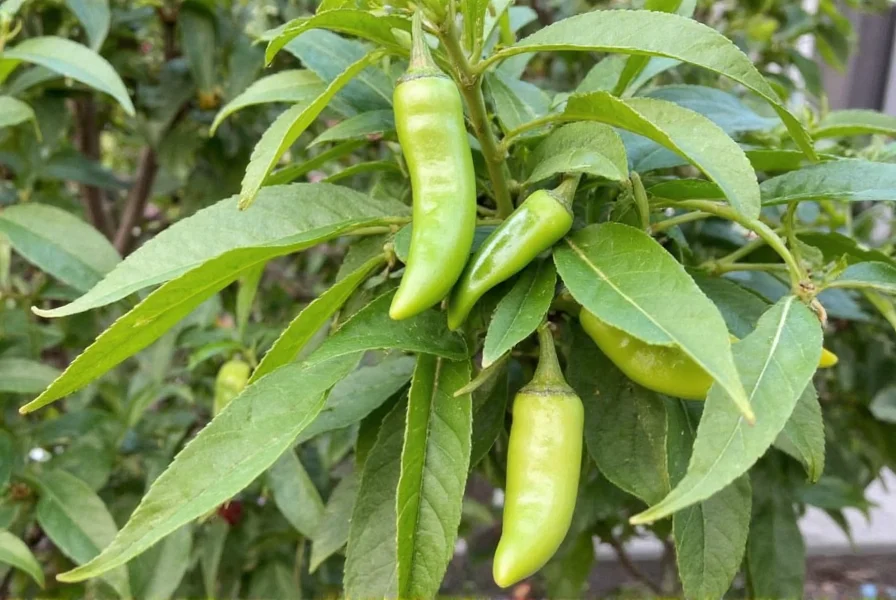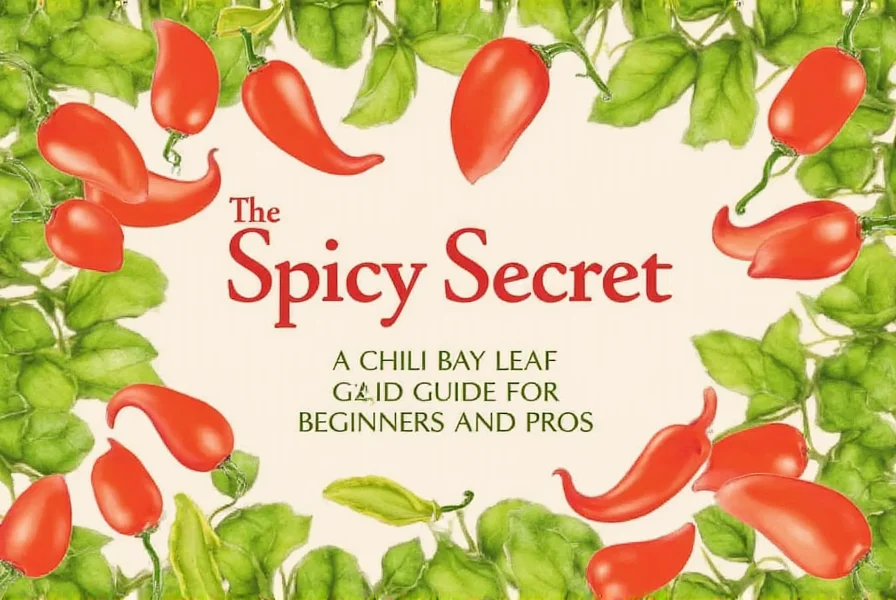Table of Contents
Introduction to Bay Leaves in Chili Recipes
Contrary to popular belief, there is no such thing as "chili bay leaf" as a distinct plant variety. This term is often a misconception or marketing term for bay leaves used in chili recipes. Let's clarify what bay leaves are and how to use them effectively in spicy dishes.

What Are Bay Leaves?
Bay leaves, scientifically known as Laurus nobilis, are a common culinary herb used in many cuisines worldwide. They come from the laurel tree and have a subtle, herbal flavor with notes of clove and pepper. While they are not spicy on their own, they are frequently used in chili recipes to add depth and complexity to the flavor profile.
The term "chili bay leaf" likely originated from the common practice of using bay leaves in chili dishes. However, it's important to note that there is no botanical hybrid between bay leaves and chili peppers. The confusion may arise because some spice vendors market bay leaves specifically for chili recipes as "chili bay leaf", but this is purely a marketing term, not a botanical classification.
Practical Tips for Using Bay Leaves in Chili Dishes
Here are some practical tips to help you make the most of bay leaves in your spicy cooking:
- Use It Sparingly: Bay leaves have a subtle flavor that intensifies with cooking time. Start with one leaf per pot of chili and adjust based on taste preferences.
- Add It Early: For maximum flavor infusion, add bay leaves during the initial sautéing or simmering stage of your chili recipe.
- Pair It With Rich Flavors: Bay leaves complement rich, hearty ingredients like beef, beans, tomatoes, and spices commonly used in chili recipes.
- Experiment With Different Cuisines: Try using bay leaves in Mexican, Indian, or Thai-inspired chili variations for added complexity.
- Make Your Own Infusion: Create a bay leaf oil by steeping dried leaves in olive or avocado oil for a few days. Use it as a drizzle over finished chili or roasted vegetables.
- Always Remove Before Serving: Like all bay leaves, they remain stiff during cooking and should be removed before serving to avoid choking hazards.
Buying Guide for Bay Leaves
When purchasing bay leaves for chili recipes, consider these factors to ensure quality:
Product Features
- Origin: Look for bay leaves from regions known for quality spices, such as Turkey, California, or the Mediterranean.
- Form: Dried bay leaves are most common and have longer shelf life. Fresh bay leaves offer more intense aroma but are harder to find.
- Packaging: Choose products in airtight containers to preserve freshness and potency.
Advantages
- Flavor Boost: Adds depth and complexity without overwhelming heat.
- Versatile: Works well in both savory and sweet applications beyond chili recipes.
- Long Shelf Life: When stored properly, dried bay leaves can last up to two years.
Use Cases
- Cooking: Ideal for soups, stews, marinades, and sauces including chili recipes.
- Baking: Can be used in spice blends for breads or savory baked goods.
- Infusions: Great for making oils, vinegars, or even cocktails.
Storage Recommendations
- Dry Storage: Keep in an airtight container away from light, heat, and moisture.
- Temperature: Store in a cool, dark cupboard (60-70°F or 15-21°C is ideal).
- Shelf Life: Properly stored, dried bay leaves maintain best quality for 1-2 years.
- Extended Storage: For longer preservation, store in the freezer in an airtight container.
Bay Leaf Varieties for Spicy Cooking
| Feature | Turkish Bay Leaves | California Bay Leaves | Mediterranean Bay Leaves |
|---|---|---|---|
| Flavor Profile | Subtle, sweet, with mild clove notes | Stronger, more pungent, with eucalyptus notes | Balanced, herbal, with floral undertones |
| Best Used In | Long-simmered chili recipes, stews | Quick-cooking dishes, tomato-based chili | General-purpose chili and soups |
| Storage | Airtight container in cool, dark place | Airtight container in cool, dark place | Airtight container in cool, dark place |
Frequently Asked Questions About Bay Leaves in Chili Recipes
Is "chili bay leaf" a real plant variety?
No, there is no botanical variety called "chili bay leaf." The term is a common misconception or marketing label for regular bay leaves (Laurus nobilis) used in chili recipes. Bay leaves and chili peppers come from completely different plant families and cannot hybridize.
How do bay leaves differ from chili peppers in flavor?
Bay leaves have a subtle, herbal, slightly floral flavor with notes of clove and pepper, but no heat. Chili peppers provide direct heat through capsaicin compounds. Bay leaves add depth and complexity to chili recipes without contributing spiciness, while chili peppers provide the heat element.
How should I use bay leaves in chili recipes?
Add 1-2 dried bay leaves during the initial cooking stage of your chili. Remove them before serving. For stronger flavor, use fresh bay leaves (1 leaf per pot) but be cautious as they're more potent. Don't confuse bay leaves with chili peppers - they serve different flavor roles in chili recipes.
Can I substitute bay leaves for chili peppers?
No, they serve completely different purposes. Bay leaves provide aromatic depth without heat, while chili peppers provide spiciness. If a recipe calls for heat, you'll need to add chili peppers or flakes separately. Using bay leaves alone won't make your chili spicy.
Where can I find high-quality bay leaves for chili recipes?
Look for bay leaves in the spice section of grocery stores, specialty food shops, or online retailers. Turkish bay leaves are most common for chili recipes due to their balanced flavor. Check for packaging that indicates the origin and harvest date for best quality.
Why do some products call themselves "chili bay leaf"?
This is typically a marketing strategy to target customers looking for ingredients for chili recipes. The term is not botanically accurate but helps consumers identify bay leaves intended for use in spicy dishes. Always check the botanical name (Laurus nobilis) to confirm you're getting regular bay leaves.
Do I need to remove bay leaves before serving chili?
Yes, absolutely. Like all bay leaves, they remain stiff and leathery during cooking and can be a choking hazard if accidentally eaten. Always remove them before serving your dish.
Conclusion
Understanding the true nature of bay leaves in chili recipes is essential for proper culinary use. Bay leaves (Laurus nobilis) are a valuable ingredient that adds depth and complexity to spicy dishes, but they are not a source of heat. The term "chili bay leaf" is a marketing misnomer that can lead to confusion in the kitchen.
When using bay leaves in chili recipes, remember to add them early in the cooking process and remove them before serving. With proper storage in a cool, dark place, your bay leaves will maintain their flavor for up to two years. By understanding the distinction between bay leaves and chili peppers, you'll elevate your chili recipes with the right flavor profile.











 浙公网安备
33010002000092号
浙公网安备
33010002000092号 浙B2-20120091-4
浙B2-20120091-4